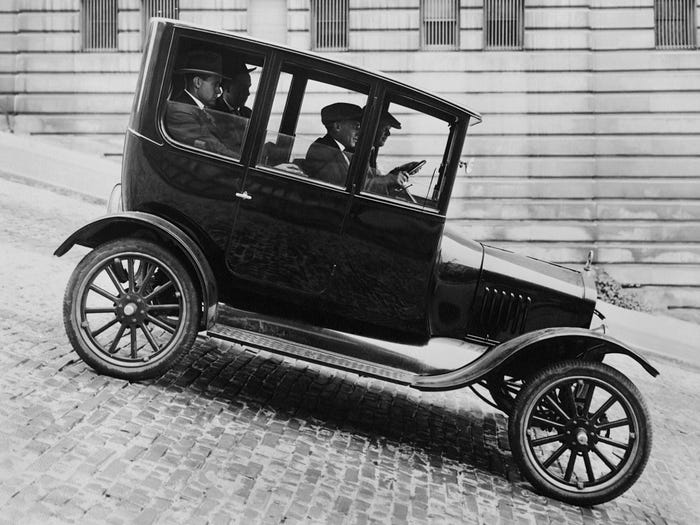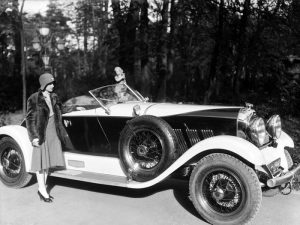
Hitting the Road in the 1920s
Travel for Americans during the 1920s looked much different from previous generations. The rise in car ownership made it possible for the working man and woman to hop into their jalopies and enjoy long-distance road trips—no longer did one have to be wealthy to see the country. Although purchasing a car was a major expense, the mass production of vehicles and upsurge in employment made car ownership by the working class more feasible.
Having a car gave car owners a sense of personal freedom to come and go as they pleased. One could travel from coast to coast, from the seaside to the desert, and on and on. The Roaring Twenties saw a shift not only in how people traveled, but also where they slept, as cars were often looked upon to serve as both a mode of transportation as well as lodging for the night. The transformation could be achieved with the use of an auto tent and cot. An advertisement from the 1925 Von Lengerke & Detmold Inc. catalog suggests, “It is very easy to set up, made of strong, durable material, and will stand the many hard knocks of many a long trip. The fact that it will fit in all makes of touring cars and can also be used outside makes it especially desirable for the motor tourist.”
If a traveler yearned for accommodations more like home, auto courts provided just that. These cottage-like lodgings sprang up throughout California in locales like Los Angeles, Banning, and Lincoln Heights. Some, such as Lockwood Auto Court in the Lincoln Heights neighborhood of Los Angeles boasted as many as seventy available cottages. The typical auto court provided a car port and interior amenities, such as indoor plumbing, gas stoves, and beds, providing all the creature comforts of home.
As motor travel became more popular, so did the demand for fast and ready meals. Roadside and drive-through eateries soon dotted the highways and byways within California. They provided quick and easy service, which was convenient for the harried travelers. Some of these roadside places provided mini markets where one could purchase food to make their own meals as they waited for gas to be pumped into their autos. Others offered prepared meals with menus that appealed to travelers wanting a taste of home cooking, while others became popular with their simple fare of sandwiches and coffee.
It seems that the keys to 1920s motorists’ hearts and pocketbooks were fast service and convenience in all things, especially when it came to travel, food, and lodging. The pace of life quickened dramatically during the 1920s, increasing the familiar frenzy that hasn’t slowed down since!

The 1920s are often looked at as one of the most influential decades of automobile advancements.

The Roaring ’20s marked a new era of automobile advancements, with stylish vehicles becoming an iconic part of the decade.